If you bought a cast-iron frying pan from the store, then to fully use it you should definitely heat it at home. The purposes for calcination can be different: to prevent food from burning, as required from the instructions from the manufacturers, for thorough cleaning, and others. This procedure should be approached seriously, observing all the rules and sequence of the calcination technology, so as not to harm yourself and others.
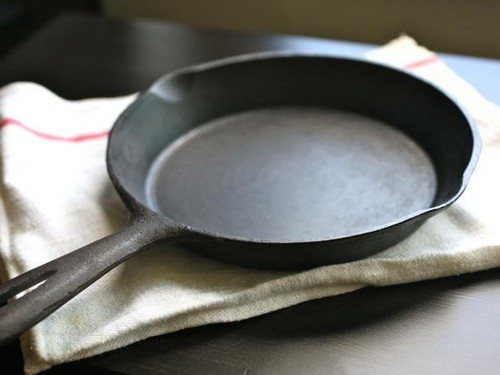
A frying pan made from real cast iron is a very high-quality product, ideal for heat treatment of food. A special feature of this material is the presence of pores, which, as the product is used, become clogged with food and oil. Subsequently, such clogging results in burning and sticking of food, which has a bad effect on the taste of the food and on the psychological background of a person, since cooking in such a frying pan becomes an unpleasant and exhausting procedure.
Thanks to calcination, the cast iron frying pan again acquires positive qualities and properties. When the pan is heated, burnt oil and food particles that have clogged deep into the pores burn out. Therefore, this procedure should be carried out at least once every six months, and if this is your favorite frying pan, then it should be calcined once every 3 months.
In what cases should it be calcined?
There are several cases when you should season a cast iron skillet.
- New frying pan.“Industrial plaque” remains on its surface, a lubricant that adversely affects your health if eaten. At first glance, it is not visible, but after calcining the pan, you can cook calmly, since it is irrevocably removed.
- An old cast iron frying pan with carbon deposits. Soot is burnt fat and oil that has accumulated over a long period of time and is harmful to humans. Thoroughly calcining the pan will help get rid of this disease.
- For making pancakes and pancakes. Our grandparents knew this method of cleaning a cast iron frying pan. After calcination, pancakes and pancakes do not burn, but easily come off the surface.
Methods
Today, there are 3 main methods of calcining a cast-iron frying pan that are known and have been tested in practice and time.
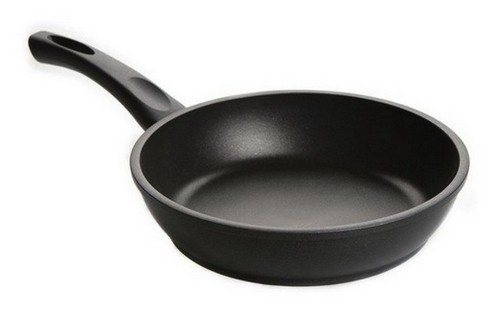
Salt
- Wash the pan thoroughly with dish soap.
- Rinse and wipe dry.
- Check the entire working surface of the frying pan for any remaining dried food or burnt food. If found, remove them.
- Pour salt into the pan, 1 centimeter thick. The size of the grains of salt does not matter much. The main thing is that table salt does not contain additives or iodine.
- Heat the frying pan with salt at maximum temperature for 15-20 minutes. There may be an unpleasant odor.
- After the salt has finished roasting, throw it away. It is no longer suitable for food.
- Pour sunflower oil into the pan until it covers the bottom. Leave on high heat for 20-25 minutes. It is also possible to use lard, fat, if there is no vegetable oil.
- After the procedure, drain the oil, rinse the pan without using detergents, and wipe dry.
The use of salt in this method of calcination is explained by the fact that salt is a natural absorbent; it absorbs all harmful residues from the surface of the frying pan, so salt after the procedure is not suitable for food.
Large amounts of refined vegetable oil
This calcination technology is more dangerous than the first. Be extremely careful and attentive and follow the directions. Negligence and inattention can cause a fire (since hot oil can burst into flames if not taken care of and cause harm to health).
- Wash the cast iron frying pan thoroughly to remove food residues with detergent.
- Wipe dry (there should not be a single drop of water, otherwise, together with vegetable oil, the latter will start to “shoot”).
- Fill the pan with as much oil as possible.
- Place on the stove and heat at medium speed for 30-35 minutes, making sure that the oil does not begin to boil intensely.
- After calcination is complete, drain the used oil and rinse the pan under running water.
- Wipe the working surface of the pan dry. You can cook.
Oven
This method is suitable for people who do not have time to carry out all the actions described in the first two methods. But, unfortunately, it does not give such high results as other methods. Heating in the oven is only suitable for frying pans that do not have a wooden or plastic handle.
- Wash the pan thoroughly with dish soap.
- Wipe the work surface dry.
- Soak cotton fabric with a small amount of sunflower oil.
- Coat a cast iron frying pan well with a cloth soaked in it.
- Place the greased frying pan bottom up into a preheated oven (180-200 degrees). Heat it for an hour.
- After an hour, turn off the oven. Leave the pan there until it cools completely.
This method takes much longer, but there is much less hassle than in the first two methods of calcining a cast-iron frying pan.
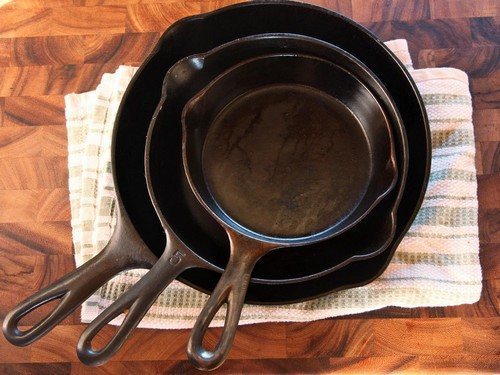
Basic Rules
Even if calcining a vessel does not seem like a complicated procedure to you, you should still carefully study and adhere to the simplest but most important rules.
- Oil is a highly flammable substance! Be careful when heating it.
- Salt for calcination, it is advisable to use medium or coarse grinding. Salt must be without any additional substances.
- Used oil and salt should only be disposed of when the substances have cooled completely. Firstly, the effect of such a procedure is enhanced, and secondly, it is much safer.
Features of the procedure
Cast iron is a very interesting material, which has its own exclusive properties that not all metals can boast of.
- When calcining a cast iron frying pan, the vegetable oil used is a “lubricant”. And if you periodically heat a frying pan with it, regardless of whether the surface condition of the pan requires it or not, then after a series of such procedures nothing will burn on it.
- After the calcination procedure, using any technology, the frying pan can only be rinsed with water, without using any detergents, then the substance remaining on the surface will “work” a little more without your participation.
- If the cast iron is real, without any admixtures of other metals, then calcination will not harm the frying pan in any way, but, on the contrary, will only improve its quality each time.
- If the frying pan becomes deformed or cracks after heating, then you were sold low-quality products; you can safely return it to the store (while keeping the receipt for the goods).
- Important!!! If a cast iron frying pan is coated with enamel, then it cannot be heated! The enamel layer may be damaged.
- It is not recommended to store liquid food (soups, broths, gravies) in cast iron products. This can be explained by the presence of pores in the metal. If there is liquid in the pores for a long time, they will rust, and the dishes will “deteriorate from the inside,” which can no longer be corrected.
- Never use abrasive substances that contain chlorine to clean a cast iron frying pan!
With proper and careful use of cast iron cookware, it will last you for decades.


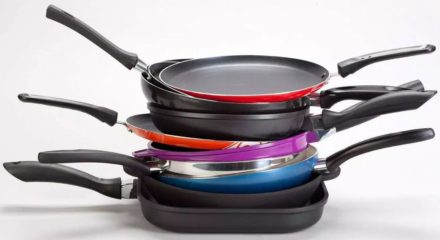

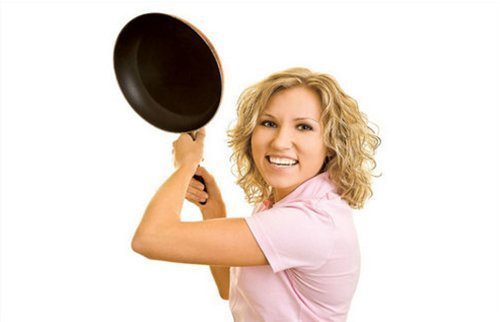
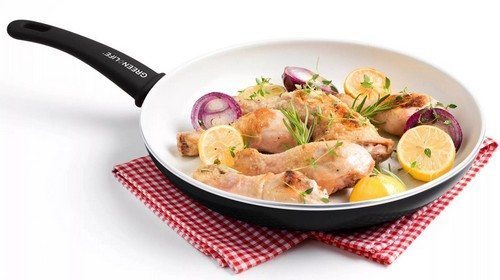
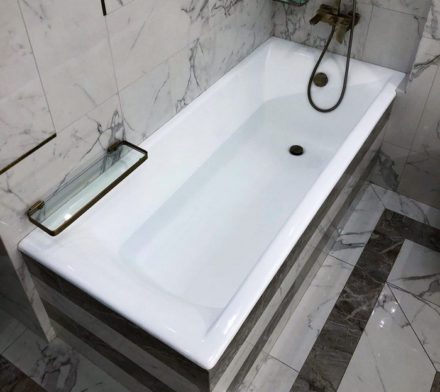
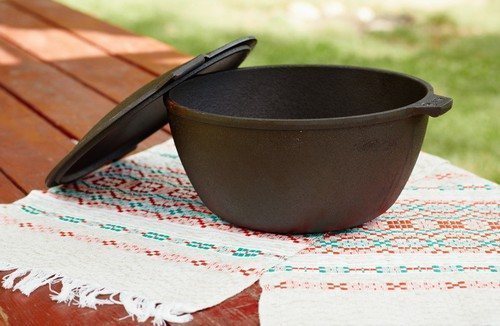
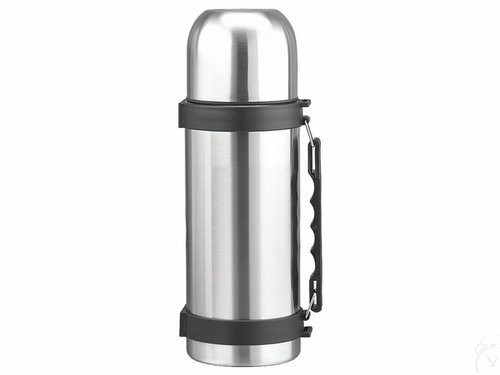
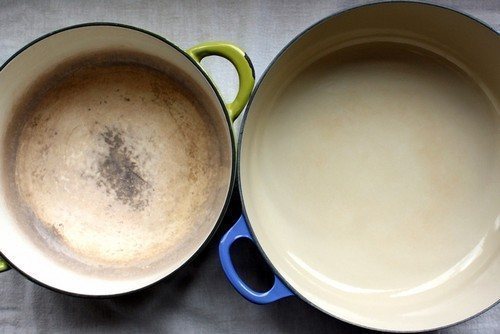
Do you understand what 20 minutes at maximum temperature and sunflower oil mean?
The fool will read your article and burn the floor of the house!
Idiots...